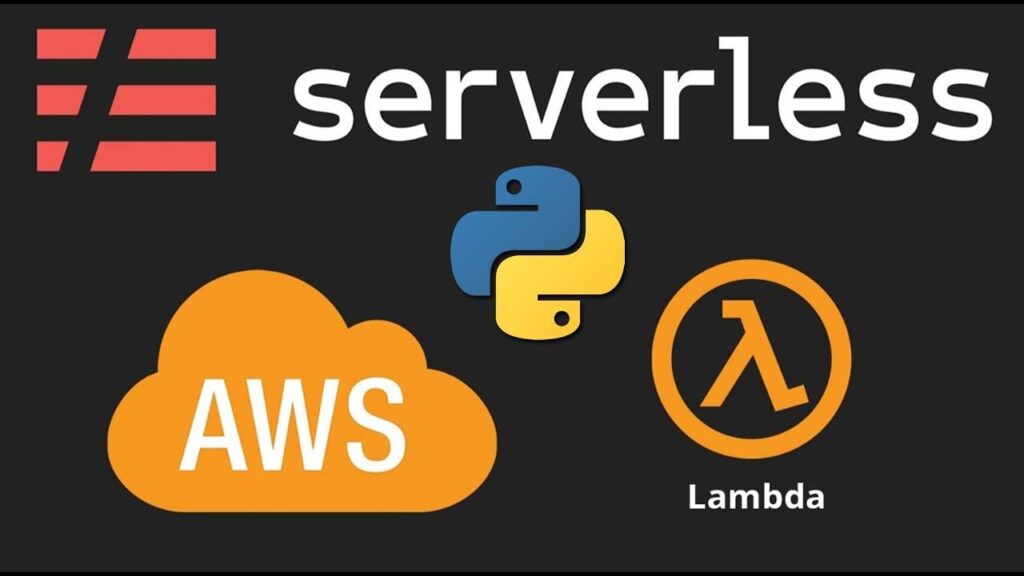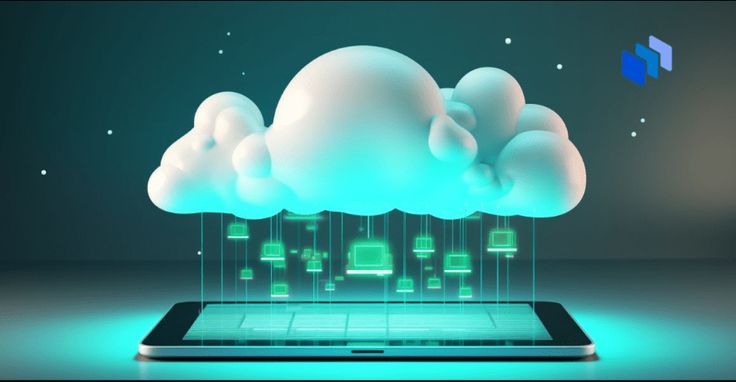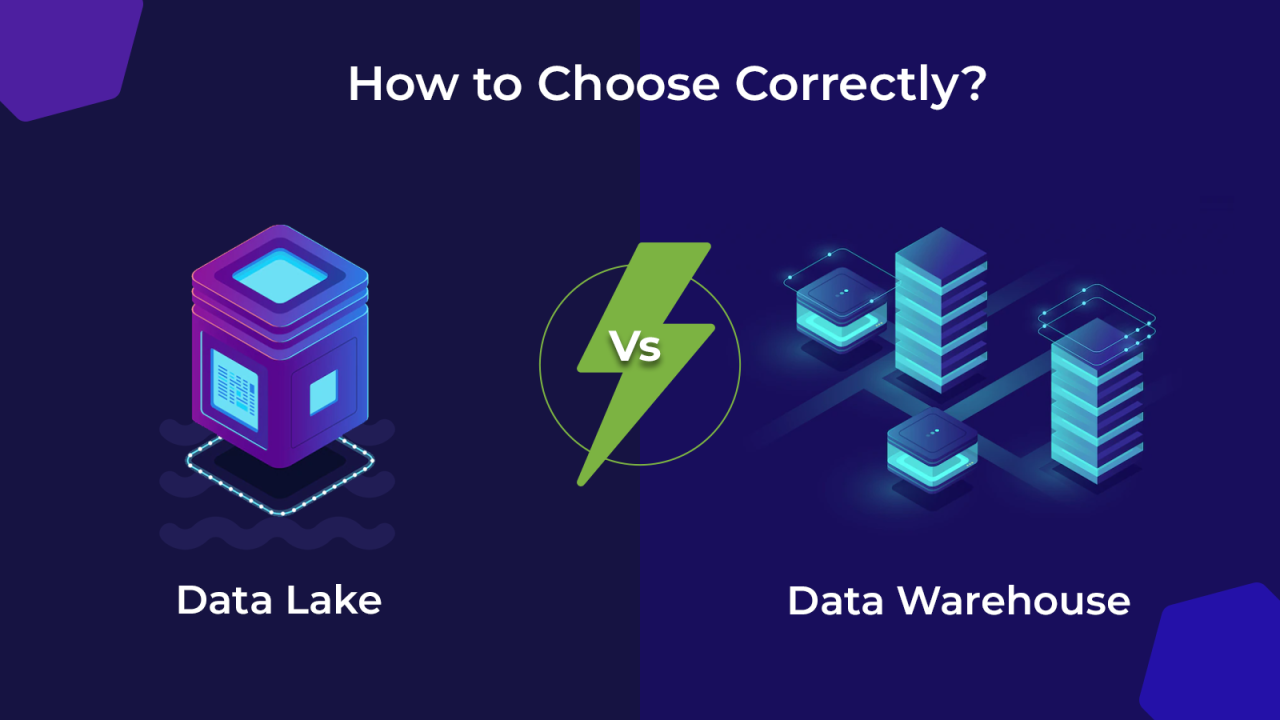The landscape of software development is undergoing a profound and accelerating transformation, fundamentally redefining how applications are conceived, built, and operated. At the vanguard of this shift lies serverless computing, a revolutionary paradigm that fundamentally alters our relationship with infrastructure. Far from implying the complete absence of servers—for they certainly exist, managed by cloud providers—serverless architecture masterfully abstracts away the intricate complexities of infrastructure provisioning, scaling, and maintenance. This liberation allows developers to concentrate their invaluable time and effort exclusively on writing the code that delivers core business value. This isn’t just an incremental upgrade; it’s a quantum leap in agility, significantly boosting developer productivity, drastically reducing operational overhead, and enabling the creation of highly scalable, cost-effective, and remarkably resilient solutions. This paradigm undeniably represents the serverless future, where your code simply runs, effortlessly.
The Evolutionary Path: From Bare Metal to Serverless
To truly grasp the profound impact and strategic advantage of serverless computing, it’s essential to trace the historical progression of computing infrastructure, understanding how each generation sought to abstract complexity and enhance efficiency.
A. Bare Metal Servers: The Foundation
Historically, organizations began by managing their own physical bare metal servers on-premises. This model provided complete control but came with immense responsibility and significant capital expenditure.
- High Capital Investment (CapEx): Acquiring physical servers, racks, networking equipment, and setting up dedicated data center space required substantial upfront financial outlay.
- Intensive Operational Overhead: Managing these servers involved a myriad of manual and time-consuming tasks: installing operating systems, patching software, configuring networks, ensuring physical security, monitoring hardware health, and handling power and cooling. This necessitated large, specialized IT operations teams.
- Limited Scalability and Elasticity: Scaling meant purchasing, racking, and configuring more hardware, a process that could take weeks or months. This lack of elasticity made it challenging to respond quickly to fluctuating demands, leading to either costly over-provisioning or performance-impacting under-provisioning.
- Single Points of Failure: A failure in a single physical server could lead to significant downtime if not mitigated by complex and expensive redundancy measures.
- Long Development Cycles: Developers often had to wait for infrastructure to be provisioned before they could deploy and test their applications, extending project timelines.
B. Virtual Machines (VMs): The First Abstraction Layer
The advent of virtualization revolutionized infrastructure by allowing multiple isolated Virtual Machines (VMs) to run concurrently on a single physical server, vastly improving resource utilization.
- Improved Resource Utilization: Virtualization enabled consolidation, running multiple applications on fewer physical machines, leading to better hardware utilization and reduced power consumption.
- Faster Provisioning (Relative): VMs could be provisioned from templates in minutes, significantly faster than deploying new physical hardware. This increased agility.
- Isolation and Portability: Each VM operated as an isolated environment, preventing applications from interfering with each other. VMs could also be easily moved between physical hosts.
- Still Management Intensive: While abstracting hardware, VMs still required management of guest operating systems, installing runtime environments, applying security patches, and configuring networking within each VM. Developers and operations teams still bore significant responsibilities.
C. Containers: Lightweight and Portable Abstraction
Containers, epitomized by Docker, took abstraction a step further by packaging applications and all their dependencies (libraries, runtime) into lightweight, portable, and self-contained units.
- Lightweight and Fast: Unlike VMs which virtualize the entire OS, containers share the host OS kernel, making them much smaller, faster to start, and more resource-efficient.
- Consistency Across Environments: A container runs consistently regardless of the underlying infrastructure, from a developer’s laptop to a production server, eliminating ‘works on my machine’ issues.
- Rapid Deployment and Scaling: Their lightweight nature allows for very fast deployment and rapid scaling of application instances.
- Orchestration Complexity: While containers solved packaging and portability, managing large-scale container deployments and their lifecycle became a new challenge, leading to the rise of container orchestration platforms like Kubernetes. Operations teams still needed to manage the Kubernetes cluster infrastructure.
D. Platform as a Service (PaaS): Full Environment, Less Control
Platform as a Service (PaaS) offerings (e.g., Heroku, Google App Engine, AWS Elastic Beanstalk) provided an even higher level of abstraction, enabling developers to deploy their applications without managing the underlying operating system, runtime, or server environment.
- Developer Focus: Developers could simply upload their code, and the PaaS handled deployment, scaling, and most infrastructure concerns. This significantly boosted developer productivity.
- Faster Time-to-Market: The streamlined deployment process meant applications could go from development to production much faster.
- Limited Control and Vendor Lock-in: While convenient, PaaS often came with less granular control over the underlying infrastructure, which could limit certain architectural choices. There was also a risk of vendor lock-in due to proprietary platform services.
E. Serverless Computing (FaaS): Code is King
Serverless computing, particularly in the form of Functions as a Service (FaaS), represents the pinnacle of infrastructure abstraction. Here, developers write discrete functions that are triggered by events, and the cloud provider handles literally everything else.
- No Server Management (Truly): Developers are entirely absolved of managing servers, operating systems, runtime environments, patching, scaling, or capacity planning. The cloud provider assumes full responsibility.
- Event-Driven Architecture: Functions execute only in response to specific events (e.g., an API call, a database change, a file upload, a scheduled timer), making them highly efficient and reactive.
- Automatic, Instant Scaling: The cloud provider automatically and instantly scales functions up (from zero to thousands of instances) or down (back to zero) based on demand, ensuring optimal performance without manual intervention.
- ‘Pay-Per-Execution’ Billing: Users are charged only for the actual compute time consumed during a function’s execution, typically measured in milliseconds, plus the number of invocations. There are no costs for idle time.
This revolutionary shift completely liberates developers from infrastructure concerns, allowing them to innovate faster and devote their entire focus to writing business logic, thus paving the way for the serverless future.
Core Principles and Defining Attributes of Serverless Architecture
Serverless architecture operates on several foundational principles that distinguish it fundamentally from all preceding computing models and unlock its unique advantages.
A. Event-Driven Execution: The Reactive Model
Serverless functions are inherently reactive and ephemeral. They do not run continuously but instead execute only when explicitly triggered by a specific event. This event-driven nature is central to the serverless paradigm.
- Diverse Event Sources: Events can originate from a vast array of sources:
- HTTP Requests: For building APIs and web backends (e.g., a user submitting a form).
- Database Changes: When a new record is added, updated, or deleted in a database.
- File Uploads: To object storage buckets (e.g., an image uploaded triggering a resizing function).
- Message Queues/Streams: For asynchronous processing or real-time data ingestion.
- Scheduled Events: For running cron jobs or batch processes at specific intervals.
- IoT Device Data: Telemetry from connected devices.
- “Push” Model: Unlike traditional servers that typically “pull” requests or wait for connections, serverless functions are “pushed” events, making the system highly responsive and efficient as functions only activate when needed.
B. Automatic and Instantaneous Scaling
One of the most compelling and powerful features of serverless is its inherent elasticity and the complete automation of scaling.
- Scale-to-Zero: If a function is not being invoked, the cloud provider de-provisions its resources, meaning you pay nothing for idle capacity. This is a significant cost advantage.
- Scale-on-Demand: When a function experiences a sudden surge in traffic or a burst of events, the cloud provider seamlessly and automatically provisions new instances of the function to handle the load. This can scale from zero to thousands or even hundreds of thousands of concurrent executions in seconds, without any manual intervention, configuration, or pre-provisioning from the developer.
- Elasticity Without Effort: This eliminates the need for developers to anticipate traffic spikes, configure load balancers, or manage scaling policies. The platform handles it all, ensuring consistent performance and high availability under varying loads.
C. No Server Management: Operational Freedom
The most defining characteristic of serverless is the complete and utter abstraction of server management concerns from the developer.
- Zero Server Administration: Developers are entirely liberated from tasks such as choosing server types, provisioning virtual machines, managing operating systems, installing runtimes, applying security patches, handling firmware updates, configuring load balancing, or ensuring underlying infrastructure reliability.
- Cloud Provider Responsibility: The cloud provider (e.g., AWS, Azure, Google Cloud) assumes full responsibility for the underlying physical and virtual infrastructure, guaranteeing its availability, security, and performance.
- Focus on Business Logic: This profound liberation allows development teams to dedicate 100% of their time and cognitive energy to writing code that directly delivers business value, rather than managing infrastructure.
D. ‘Pay-Per-Execution’ Billing Model: Cost Efficiency
The billing model for serverless computing is granular and consumption-based, fundamentally changing cost economics.
- No Idle Costs: Unlike traditional servers where you pay for provisioned capacity regardless of usage, with serverless, you only pay when your code is actually executing. There are no charges for idle servers or waiting for traffic.
- Millisecond Granularity: Billing is typically measured in very fine increments, often per 100 milliseconds of execution time, plus the number of invocations. This ensures extreme cost efficiency, especially for applications with fluctuating, sporadic, or infrequent usage patterns.
- Cost Predictability (for known usage): While highly variable for unknown traffic, for predictable workloads, the cost can be very predictable and often significantly lower than constantly running servers.
E. Statelessness (Predominantly): Resilience and Scalability
While not an absolute technical constraint, serverless functions are generally designed to be predominantly stateless.
- Independence of Invocations: Each invocation of a serverless function is independent and does not rely on the state from previous invocations. Any persistent data or state required across invocations must be stored externally.
- External State Management: Persistent data is typically stored in dedicated, highly scalable external services such as:
- Managed databases (e.g., AWS DynamoDB, Azure Cosmos DB, Google Cloud Firestore).
- Object storage (e.g., AWS S3, Azure Blob Storage, Google Cloud Storage).
- Distributed caches (e.g., Redis).
- Message queues for asynchronous workflows.
- Enhanced Scalability and Resilience: This stateless design enhances both horizontal scalability (as any instance can handle any request) and resilience (as instance failures do not affect ongoing user sessions or data).
These characteristics define the serverless paradigm, offering a powerful, efficient, and agile approach to application development and deployment.
Transformative Use Cases and Applications of Serverless Architecture
The versatility and inherent advantages of serverless computing make it exceptionally well-suited for a wide array of modern application architectures and workloads across diverse industries.
A. Web APIs and Backend Services
Building scalable and robust RESTful APIs and backend services is a primary and highly effective use case for serverless functions.
- Microservices Backends: Serverless functions are a natural fit for microservices architecture, where each function can represent a small, single-purpose service (e.g., a function for user authentication, another for product lookup, one for order processing). This enables extreme decoupling and independent scaling.
- Web Application Backends: Functions can handle HTTP requests from single-page applications (SPAs) or mobile apps, interacting with databases, external services, and returning responses. This allows for rapid development of dynamic web applications without managing servers for the backend.
- GraphQL Endpoints: Serverless can power GraphQL APIs, efficiently resolving complex queries by invoking specific functions for different data relationships.
B. Real-time Data Processing and Stream Analytics
Serverless functions excel at processing streams of data in real-time, reacting instantly to incoming information.
- IoT Data Ingestion and Processing: Ingesting massive volumes of telemetry data from Internet of Things (IoT) devices, transforming it, performing real-time analytics, and storing it in databases or data lakes. Functions can trigger actions based on sensor readings (e.g., anomaly detection, alerts).
- Log File Analysis: Processing log streams from applications or infrastructure in real time to extract insights, detect errors, or feed into monitoring systems.
- Real-time Analytics Pipelines: Transforming and enriching data streams from sources like Apache Kafka or Amazon Kinesis for immediate analytical insights or feeding machine learning models.
- Clickstream Analysis: Analyzing user clicks and interactions on websites in real-time to personalize experiences, detect fraud, or perform immediate A/B testing.
C. File and Image Processing Automation
Automating tasks triggered by file uploads is another powerful application where serverless shines.
- Image Resizing and Optimization: When a new image is uploaded to an object storage bucket (e.g., for a social media platform or e-commerce site), a serverless function can automatically resize it to various dimensions, add watermarks, convert formats, or optimize its compression for different devices.
- Video Transcoding: Triggering functions to transcode uploaded video files into different resolutions and formats for streaming on various devices.
- Document Processing: Automatically extracting text from uploaded PDFs, converting documents, or triggering OCR (Optical Character Recognition) upon file arrival.
- Data Ingestion and Transformation (ETL): Processing newly uploaded CSV files, spreadsheets, or other data formats, transforming the data, validating it, and loading it into a database or data warehouse.
D. Chatbots, Virtual Assistants, and AI Integration
The conversational nature of chatbots and the event-driven needs of AI integration align perfectly with serverless.
- Chatbot Backends: Functions can process user queries from messaging platforms (e.g., Slack, WhatsApp, Facebook Messenger), integrate with natural language processing (NLP) services, interact with backend systems (e.g., order lookup, customer support queries), and formulate responses.
- Voice Assistant Integration: Powering the logic for voice-activated assistants (e.g., Amazon Alexa skills, Google Assistant actions), responding to commands and fulfilling requests.
- AI Model Inference: Running machine learning model inference (e.g., image recognition, sentiment analysis, recommendation generation) when triggered by specific events, enabling real-time AI insights without continuously running dedicated servers.
E. Scheduled Tasks and Batch Processing
Replacing traditional cron jobs or batch processing scripts with serverless functions provides greater reliability, scalability, and cost-efficiency.
- Daily Reports: Functions can be scheduled to run daily or weekly to generate reports, aggregate data, or send summary emails.
- Database Clean-up: Periodically running functions to clean up old data, optimize database indexes, or perform maintenance tasks.
- Automated Notifications: Sending scheduled reminders, marketing emails, or system alerts.
- Resource Management: Automatically starting or stopping development environments at scheduled times to save costs.
F. IoT Backends and Device Management
Serverless is an ideal backend for handling the massive scale of data generated by IoT devices and managing their interactions.
- Device Telemetry Ingestion: Ingesting sensor data from millions of IoT devices globally.
- Real-time Device Control: Functions can trigger actions on devices based on incoming data or commands (e.g., turning off a smart light based on a schedule, adjusting a thermostat based on room occupancy).
- Fleet Management: Processing device status updates, managing device registration, and handling firmware updates.
Unlocking the Advantages: The Power of Serverless Computing
The strategic adoption of serverless computing offers a multitude of compelling benefits for organizations and developers alike, addressing many of the long-standing challenges in software delivery and operations.
A. Drastically Reduced Operational Costs
The ‘pay-per-execution’ billing model and the complete elimination of server management responsibilities lead to profound cost savings.
- No Idle Charges: Organizations no longer pay for provisioned server capacity that sits idle, which is particularly beneficial for applications with unpredictable or sporadic traffic. This can lead to substantial reductions in cloud bills.
- Reduced IT Operations Burden: The need for dedicated operations teams focused on provisioning, patching, scaling, and maintaining servers is significantly reduced. This allows for smaller operations teams or enables existing teams to reallocate their valuable time to more strategic, high-value activities like architecture optimization, security posture enhancement, or advanced monitoring.
- Lower Total Cost of Ownership (TCO): When factoring in both direct infrastructure costs and the indirect costs of labor (staffing, training, troubleshooting), serverless often delivers a lower TCO compared to traditional server-based models.
B. Exponentially Enhanced Developer Productivity
By abstracting away all infrastructure concerns, serverless empowers developers to focus purely on their core competency: writing code that delivers business value.
- Accelerated Development Cycles: Developers don’t need to worry about server setup, environment configuration, or deployment scripts. They write their function code, define its trigger, and deploy, greatly streamlining the development lifecycle.
- Faster Time-to-Market (TTM): The reduced overhead and streamlined development process enable rapid experimentation, quick feature delivery, and frequent iterations, allowing businesses to respond more swiftly to market changes and competitive pressures.
- Reduced Cognitive Load: Developers are freed from the mental burden of infrastructure management, allowing them to concentrate their cognitive resources on solving complex business problems and building innovative features.
- Simplified Deployment and Management: Deploying serverless functions is typically a straightforward process, often involving uploading code and configuring triggers via CLI tools, SDKs, or IaC frameworks. The cloud provider handles versioning, environment management, and rolling updates seamlessly.
C. Near-Infinite and Automatic Scalability
Serverless platforms inherently provide unparalleled elasticity and automatic scaling capabilities without any manual intervention.
- Seamless Traffic Spikes: Applications can seamlessly accommodate sudden, massive spikes in demand (from zero to millions of concurrent requests) without performance degradation, downtime, or manual scaling efforts. The cloud provider handles all underlying resource provisioning.
- Global Reach: Functions can be deployed across multiple global regions, bringing compute closer to users and providing low-latency access worldwide, enhancing the user experience for a global audience.
- Elasticity by Design: This built-in elasticity ensures that the application always has the right amount of resources, optimizing both performance and cost.
D. Built-in High Availability and Fault Tolerance
Cloud providers design their serverless platforms for inherent high availability and fault tolerance, abstracting these complexities from the developer.
- Automated Redundancy: Functions are automatically distributed and replicated across multiple Availability Zones within a region. If an underlying server or Availability Zone fails, requests are automatically routed to healthy instances, ensuring continuous operation.
- Self-Healing Capabilities: The platform automatically detects and replaces unhealthy instances, guaranteeing the reliability of the underlying compute environment.
- Resilience Without Configuration: Developers don’t need to configure complex redundancy or failover mechanisms; these are built into the serverless platform by default.
E. Focus on Innovation and Business Value
By shifting the burden of infrastructure to the cloud provider, organizations can redirect their focus and resources towards true innovation.
- Strategic Resource Allocation: IT teams can move from tactical, reactive infrastructure management to strategic, proactive initiatives that directly contribute to business growth and competitive advantage.
- Faster Experimentation: The low cost of experimentation and rapid deployment capabilities enable businesses to quickly test new ideas, iterate on features, and pivot based on market feedback, fostering a culture of continuous innovation.
- Competitive Advantage: The ability to develop and deploy solutions faster, at lower cost, and with higher scalability provides a significant competitive edge in dynamic markets.
Overcoming the Hurdles: Challenges and Considerations in Serverless Adoption
While serverless offers transformative benefits, its adoption is not without its own set of unique complexities and challenges. Organizations must be fully aware of these considerations to ensure a successful and optimized implementation.
A. Cold Starts: Latency at Inactivity
One of the most frequently discussed challenges is cold starts. When a serverless function hasn’t been invoked for a period of time (e.g., minutes or hours), its underlying container or execution environment might be de-provisioned by the cloud provider to conserve resources. The very first invocation of that function after such a period, known as a ‘cold start,’ incurs a slight delay as the cloud provider initializes the container, loads the function’s code, and sets up the execution environment.
- Impact on User Experience: For highly latency-sensitive applications (e.g., real-time interactive APIs), cold starts, even if only a few hundred milliseconds or a couple of seconds, can be noticeable to end-users and degrade their experience.
- Mitigation Strategies: Cloud providers continuously work to minimize cold start times. Developers can also employ strategies like:
- Provisioned Concurrency / Reserved Instances: Pre-warming a specified number of function instances to ensure they are always ready.
- Optimizing Deployment Package Size: Keeping function code and dependencies as small as possible to reduce loading time.
- Efficient Runtime Selection: Choosing faster-starting runtimes (e.g., Node.js, Python often faster than Java or .NET).
- Keeping Functions ‘Warm’: Periodically invoking functions with dummy requests (though this negates cost savings for truly idle functions).
B. Vendor Lock-in: Ecosystem Dependencies
The serverless implementations of major cloud providers (e.g., AWS Lambda, Azure Functions, Google Cloud Functions) often have their own specific APIs, event models, tooling, and integrations with other proprietary cloud services. This can lead to a degree of vendor lock-in.
- Portability Challenges: Migrating a complex serverless application from one cloud provider to another can be challenging and time-consuming due to differences in their serverless offerings and integrated services.
- Mitigation Strategies: Using open-source frameworks like the Serverless Framework or AWS SAM can help abstract some cloud-specific details. Designing for portability by limiting reliance on highly proprietary services and adhering to open standards where possible can also help, though complete abstraction is difficult for complex applications.
C. Debugging and Monitoring Complexity in Distributed Systems
While individual functions are simple, a serverless application can be a highly distributed system with numerous functions communicating asynchronously through various event sources. This complicates debugging and monitoring.
- Distributed Tracing: Tracing a single user request as it flows across multiple functions, API Gateway, message queues, and databases can be challenging. Robust distributed tracing tools (e.g., AWS X-Ray, Azure Application Insights, OpenTelemetry) are essential.
- Aggregated Logging: Collecting, aggregating, and analyzing logs from hundreds or thousands of ephemeral function invocations requires centralized logging solutions (e.g., AWS CloudWatch Logs, Azure Monitor Logs, Splunk).
- Lack of Traditional Debugging: The ephemeral nature of functions means traditional step-through debugging tools are often not applicable. Debugging often relies heavily on logging and tracing.
- Mitigation Strategies: Investing in comprehensive observability (logs, metrics, traces), utilizing cloud provider’s integrated monitoring tools, and implementing clear logging standards within function code.
D. Cost Management for Complex Applications
While ‘pay-per-execution’ is generally cost-effective, accurately estimating and managing costs for highly complex serverless applications with numerous interconnected function invocations, particularly those with unexpected scaling patterns, can be challenging.
- Unexpected Invocation Spikes: A bug in a function that causes it to trigger infinitely, or a misconfigured event source, can lead to uncontrolled invocations and surprisingly high bills if not properly monitored.
- Distributed Cost Attribution: Attributing costs to specific features or teams in a shared serverless environment can require careful tagging strategies and sophisticated cost analysis tools.
- Mitigation Strategies: Implementing robust monitoring and alerting for cost anomalies, setting up budget alerts, using cost allocation tags, and regularly reviewing cloud billing reports.
E. State Management: The Stateless Nature
The inherently stateless nature of serverless functions means that any persistent data or state must be stored externally. This requires careful architectural design.
- External Data Stores: Developers must integrate with separate managed database services (relational, NoSQL), object storage, or caching layers. This adds external dependencies and complexity to the overall system design.
- Data Consistency Challenges: For complex distributed transactions spanning multiple functions and data stores, managing data consistency (often requiring eventual consistency patterns like Sagas) becomes a non-trivial architectural consideration.
- Mitigation Strategies: Leveraging cloud provider’s managed database and storage services, designing for eventual consistency where appropriate, and understanding distributed transaction patterns.
F. Resource Limits and Execution Duration
Serverless functions typically have configurable limits on execution duration, memory, and occasionally disk space or CPU.
- Long-Running Tasks: Tasks that require very long execution times (e.g., several minutes to hours) or very high memory allocations might not be suitable for a pure serverless (FaaS) approach and might require hybrid solutions (e.g., containerized batch jobs).
- Cold Start Impact on Large Functions: Functions with very large deployment packages or numerous dependencies can experience longer cold start times due to the time taken to download and initialize the code.
- Mitigation Strategies: Breaking down long-running tasks into smaller, chained functions; optimizing function code and dependencies; and understanding the limitations of the chosen serverless platform for specific workloads.
Best Practices for Mastering Serverless Development and Operations
To truly master serverless computing and effectively leverage its benefits while mitigating its challenges, developers and organizations should rigorously adhere to a set of proven best practices throughout the application lifecycle.
A. Keep Functions Small and Single-Purpose
Adhere strictly to the Single Responsibility Principle (SRP). Design functions to perform one specific task and do it exceptionally well.
- Micro-Functions: Aim for functions that are concise, focused, and represent a single logical operation (e.g.,
processOrder,resizeImage,sendNotification). - Benefits: Smaller functions are easier to understand, test, debug, and maintain. They also tend to have faster cold start times and consume fewer resources, optimizing cost.
- Avoid Monolithic Functions: Resist the urge to cram too much logic into a single function, as this negates many serverless benefits.
B. Optimize for Cold Starts and Performance
While cloud providers work on cold starts, developers can take steps to minimize their impact.
- Minimize Deployment Package Size: Remove unnecessary files, libraries, and dependencies from your function’s deployment package. Only include what’s absolutely essential for the function to run.
- Efficient Runtime and Language: Choose programming languages and runtimes that have faster startup times (e.g., Node.js and Python are often quicker than Java or .NET for serverless functions, though this varies by provider and configuration).
- Externalize Dependencies: If possible, place heavy dependencies outside the function’s core logic or use layers/extensions offered by cloud providers to share common libraries.
- Use Provisioned Concurrency (if available): For latency-sensitive functions, configure provisioned concurrency (e.g., AWS Lambda Provisioned Concurrency, Azure Functions Premium Plan) to keep a specified number of instances pre-warmed.
C. Implement Robust Logging, Monitoring, and Tracing
Comprehensive observability is paramount in distributed serverless environments.
- Centralized Logging: Ensure all function logs are sent to a centralized logging service (e.g., AWS CloudWatch Logs, Azure Monitor Logs, Google Cloud Logging, Splunk, Datadog). Use structured logging (e.g., JSON format) for easier analysis.
- Meaningful Metrics: Collect and monitor key metrics for your functions (invocations, errors, duration, throttles). Set up alerts for anomalies.
- Distributed Tracing: Utilize cloud provider’s native tracing tools (e.g., AWS X-Ray, Azure Application Insights) or open-source solutions (e.g., OpenTelemetry, Jaeger) to trace requests across multiple functions and integrated services, making debugging vastly easier.
- Business Metrics: Beyond technical metrics, monitor business KPIs to understand the real-world impact of your serverless application.
D. Manage State Externally and Leverage Managed Services
Design your functions to be stateless and rely on specialized, scalable external services for data persistence and state management.
- Dedicated Data Stores: Store all persistent data in managed database services (e.g., AWS DynamoDB, Aurora Serverless; Azure Cosmos DB, SQL Database; Google Cloud Firestore, Cloud SQL). These services offer inherent scalability, reliability, and reduced operational burden.
- Object Storage: Use object storage (e.g., S3, Azure Blob Storage, Google Cloud Storage) for large files, static assets, and as a data lake for raw data.
- Managed Caches: For frequently accessed data or session state, use managed in-memory caches (e.g., AWS ElastiCache for Redis, Azure Cache for Redis).
- Message Queues/Streams: For asynchronous communication and decoupling, leverage managed message queues (e.g., SQS, Azure Service Bus, Pub/Sub) or streaming platforms (e.g., Kinesis, Event Hubs).
E. Embrace Infrastructure as Code (IaC)
Define your serverless functions, their triggers, and all related infrastructure (APIs, databases, permissions) using Infrastructure as Code (IaC).
- Version Control: Store your IaC definitions in a version control system (e.g., Git). This ensures traceability, collaboration, and easy rollbacks.
- Consistent Deployments: IaC guarantees consistent, repeatable deployments across different environments (development, staging, production), eliminating configuration drift.
- Tools: Use frameworks like the Serverless Framework, AWS Serverless Application Model (SAM), Terraform, or cloud-native templates (AWS CloudFormation, Azure Bicep) to manage your serverless deployments.
F. Implement Robust Security Best Practices
Security must be paramount in serverless architectures.
- Principle of Least Privilege: Grant your serverless functions and their associated roles only the absolute minimum necessary permissions to interact with other services. Avoid overly broad permissions.
- Input Validation: Rigorously validate all inputs to your functions to prevent injection attacks and unexpected behavior.
- Secret Management: Do not hardcode sensitive information (API keys, database credentials) in your code. Use dedicated secret management services (e.g., AWS Secrets Manager, Azure Key Vault, HashiCorp Vault).
- Encrypt Data: Ensure data is encrypted both at rest (in storage services) and in transit (using HTTPS/TLS for all communication).
- Regular Audits: Periodically review your function configurations, IAM policies, and integrated service settings for security vulnerabilities.
G. Design for Idempotency and Error Handling
In distributed, event-driven systems, functions can sometimes be invoked multiple times or fail transiently.
- Idempotency: Design your functions to be idempotent, meaning that executing the same function multiple times with the same input should produce the same result and not cause unintended side effects (e.g., charging a customer multiple times).
- Retry Mechanisms: Implement robust retry logic with exponential backoff for external service calls.
- Dead Letter Queues (DLQs): Configure DLQs for your event sources (e.g., Lambda functions, SQS queues) to capture messages that fail processing, preventing data loss and allowing for later analysis and reprocessing.
H. Thorough Testing Strategies
Adopt comprehensive testing strategies for serverless applications.
- Unit Tests: Test individual function logic in isolation.
- Integration Tests: Test how functions interact with other cloud services (databases, queues).
- End-to-End Tests: Test the entire flow of an application through its serverless components and external dependencies.
- Local Development Tools: Utilize local emulation tools (e.g., AWS SAM CLI, LocalStack) for faster local development and testing, though always validate in a real cloud environment before production.
The Future Trajectory of Serverless: Beyond Functions
The serverless ecosystem is continuously evolving, expanding beyond just Functions as a Service to encompass entire application architectures and new computing paradigms. The future promises even greater abstraction, intelligence, and accessibility.
A. Broader ‘Serverless’ Services and Platforms
The concept of ‘serverless’ is expanding beyond just FaaS to encompass a wider array of managed services that eliminate server management for various components.
- Serverless Databases: Databases that automatically scale and bill per usage (e.g., AWS Aurora Serverless, Azure SQL Database Serverless, Google Cloud Firestore).
- Serverless Containers: Running containerized applications without managing the underlying servers (e.g., AWS Fargate, Azure Container Apps, Google Cloud Run). This bridges the gap between containers and FaaS, offering more control than FaaS but less operational overhead than traditional Kubernetes.
- Serverless Streaming/Messaging: Fully managed, highly scalable messaging and streaming platforms (e.g., AWS Kinesis, Azure Event Hubs, Google Cloud Pub/Sub) that scale seamlessly.
- Integrated Platforms: Cloud providers will continue to offer more tightly integrated serverless platforms that simplify the orchestration of multiple serverless services into complex applications.
B. Enhanced Developer Experience (DX) and Tooling
The developer experience for serverless will become even more seamless and intuitive.
- Improved Local Development: More robust and accurate local emulation tools, allowing developers to test complex serverless workflows on their machines without constant cloud deployments.
- AI-Powered Code Generation and Optimization: AI assistants will help write serverless function code, suggest optimal configurations, identify performance bottlenecks, and generate test cases, significantly accelerating development.
- Visual Development Tools: Low-code/no-code platforms and visual drag-and-drop interfaces will make it easier for non-developers to build serverless workflows and integrations, democratizing application development.
- Automatic Code Optimization: Tools that automatically optimize function code for cold start reduction, memory usage, and execution speed.
C. Edge Serverless: Compute Closer to the User
The growth of IoT and the demand for ultra-low latency applications will drive the expansion of edge serverless computing.
- Functions at the Edge: Deploying serverless functions closer to end-users or data sources (e.g., on CDN edge locations, IoT gateways) to reduce latency, minimize bandwidth consumption, and enable real-time processing of data generated at the edge.
- Hybrid Edge-Cloud Architectures: Seamlessly orchestrating workflows that involve both edge-based serverless functions for immediate processing and cloud-based serverless functions for centralized analytics and storage.
- Autonomous Edge Devices: Enabling more intelligent and autonomous IoT devices that can make real-time decisions without constant cloud connectivity, powered by embedded serverless runtimes.
D. AI/ML-Native Serverless Workloads
Serverless will become the preferred deployment model for a vast array of AI and Machine Learning workloads.
- Serverless Inference: Running AI model inference in serverless functions, scaling instantly to meet demand for real-time predictions without the cost of always-on GPU instances.
- MLOps Integration: Tighter integration of serverless with MLOps pipelines for automated model deployment, retraining, and monitoring, enabling more agile AI development cycles.
- Generative AI Backends: Powering the complex, burstable compute needed for generative AI models (e.g., image generation, text synthesis) as serverless functions, leveraging their elasticity.
E. Stronger Governance and FinOps Integration
As serverless adoption grows, so will the need for robust governance and cost management.
- Policy as Code for Serverless: Defining and enforcing compliance, security, and resource policies directly in code for serverless functions and resources.
- Advanced FinOps Tools: More sophisticated tools for granular cost attribution, anomaly detection, and optimization recommendations specifically tailored for the serverless billing model, ensuring cost efficiency at scale.
- Security Posture Management: Automated tools that continuously assess the security posture of serverless deployments, identifying misconfigurations and vulnerabilities.
F. Cross-Cloud and Open-Source Serverless Initiatives
While vendor lock-in remains a concern, efforts towards greater portability and standardization will continue.
- Open-Source Runtimes/Frameworks: Continued development of open-source serverless runtimes and frameworks that offer greater flexibility and reduce reliance on proprietary cloud services.
- Cloud-Agnostic Tools: Tools and platforms that allow developers to deploy serverless applications across multiple cloud providers with a more unified approach.
- Wider Enterprise Adoption: As the technology matures and best practices become established, more large enterprises will move mission-critical workloads to serverless, moving beyond initial experimental projects.
Conclusion
Serverless computing is far more than just a fleeting trend; it represents a fundamental and enduring shift in the architecture of modern applications. By masterfully abstracting away the myriad complexities of infrastructure management, it empowers developers to focus exclusively on what truly matters: writing the code that delivers tangible business value. This profound liberation unlocks unprecedented levels of agility, cost efficiency, and automatic scalability, redefining the very essence of software delivery.
While the journey into the serverless future is not without its nuances and challenges—such as navigating cold starts, managing distributed systems, and understanding new cost models—the continuous evolution of cloud platforms, coupled with the adoption of robust best practices, is systematically mitigating these concerns. The trajectory is clear: a future where the concept of managing servers becomes an anachronism for an ever-increasing range of applications. Serverless computing is not just adapting to the demands of the digital age; it is actively shaping it, enabling faster innovation, greater resilience, and a world where your code truly just runs, effortlessly, charting the course for the ultimate serverless future.














